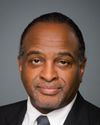I think it's a fantastic idea. I'm a product of an exchange program myself. I spent a year and a half in India, and I think it's a fantastic learning opportunity.
Within Canada itself, of course, it opens up a whole bunch of possibilities to take, for example, urban aboriginal youth, who are often disconnected from their culture, back to even other aboriginal communities in rural or remote settings, and of course to bring non-aboriginal youth both into the urban reality of aboriginal people and the remote reality—the reserve and small communities, and the Métis settlement reality.
There are several infrastructures in place. We have provincial associations and then we have the friendship centres themselves in communities. The Métis organizations have their structures as well, as do first nations, and I think there are easy, ready-made structures to at least start the conversation and to work through and to get access to it.
For example, in Ontario, the Ontario Federation of Indian Friendship Centres runs urban, alternative, aboriginal high schools. There's one here in Ottawa, for example. There are eight or nine of them across the province. There are urban high school students going to alternative high schools, because they get better rates of graduation from it.
So you could already see there's a ready-made group. But you can go to a lot of school boards and with the help of organizations you can find the appropriate students. It's important to find the non-aboriginal students as well and to bring them to a Métis community, or to a first nations or an Inuit community, and do that part of the exchange to learn.
It's a great idea.





